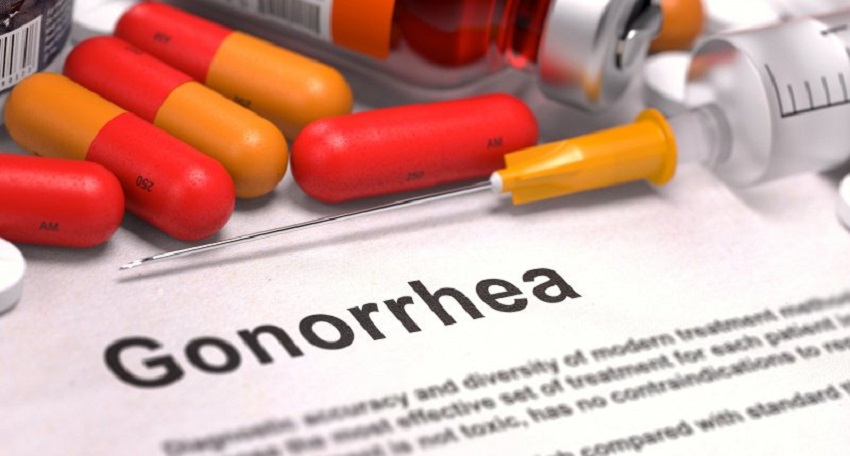As though humanity isn’t already facing enough stressful sexual health situations, gonorrhoea is striving to join the league of incurable sexually transmitted diseases (STDs).
Gonorrhoea, as a common sexually-transmitted infection, can be prevented through safer sexual behaviour. Consistent and correct use of the condom will go a way in quelling the spread of the infection.
But, failure in preventing the spread of gonorrhea and, the inappropriate use of antibiotics for the infection is making the sexually-transmitted infection, a formidable one. Gonorrhea is now almost untreatable.
The World Health Organization (WHO) has already announced that antibiotic-resistant gonorrhea is on the rise and, that the world needs new drugs to combat it. WHO said the inappropriate use of antibiotics is increasing the development of antibiotic resistance in gonorrhea.
Here are five (5) facts you should know about this:
1. The bacteria that cause gonorrhea are now smart
WHO divulged that records from 77 nations across the globe have revealed that antibiotic resistance is making gonorrhea much harder, and sometimes impossible, to treat. It was also divulged that there is widespread resistance to older and cheaper antibiotics.
“Some countries, particularly high-income ones, where surveillance is best are finding cases of the infection that are untreatable by all known antibiotics,” stated the health organization.
A Medical Officer at WHO’ Human Reproduction department, Dr. Teodora Wi buttressed on this. Dr. Wi said:
“The bacteria that cause gonorrhea are particularly smart. Every time we use a new class of antibiotics to treat the infection, the bacteria evolve to resist them.
“These cases may just be the tip of the iceberg, since systems to diagnose and report untreatable infections are lacking in lower-income countries where gonorrhea is actually more common,” added Dr. Wi.
2. The infection rate is high, making untreatable gonorrhea common
While gonorrhea can infect the genitals, rectum, and throat. The infection in women can generate complications which can manifest as pelvic inflammatory disease, ectopic pregnancy, and infertility, as well as an increased risk of HIV.
About 78 million people are infected with gonorrhoea each year. It was specified that decreasing use of condom, increased urbanisation and travel, poor infection detection rates, and inadequate or failed treatment are the factors contributing to this increase of untreatable gonorrhoea.
Many people who are infected with gonorrhoea do not have any symptoms, so they go undiagnosed and untreated.
On the other hand, however, when patients do have symptoms, such as discharge from the urethra or the vagina, doctors often assume it is gonorrhoea and prescribe antibiotics – even though people may be suffering from another kind of infection.
The overall inappropriate use of antibiotics increases the development of antibiotic resistance in gonorrhoea as well as other bacterial diseases. – WHO
3. Only extended-spectrum cephalosporins (ESCs) are now effective in treating gonorrhoea
WHO Global Gonococcal Antimicrobial Surveillance Programme (WHO GASP), has been monitoring trends in drug-resistant gonorrhoea.
WHO GASP data from 2009 to 2014 reported resistance to most of the drugs used in treating gonorrhea.
“(There’s) widespread resistance to ciprofloxacin [97% of countries that reported data in that period found drug-resistant strains], increasing resistance to azithromycin [81%], and the emergence of resistance to the current last-resort treatment: the extended-spectrum cephalosporins (ESCs) oral cefixime or injectable ceftriaxone [66%].
“Currently, in most countries, ESCs are the only single antibiotic that remains effective for treating gonorrhea. But resistance to cefixime – and more rarely to ceftriaxone – has now been reported in more than 50 countries,” WHO disclosed.
This was why WHO in 2016, advised doctors to give 2 antibiotics – ceftriaxone and azithromycin when treating the infection.
4. New drugs are being developed but gonorrhea is frustrating the efforts
Wiredbugs gathered that 3 new drugs – solithromycin, zoliflodacin, and gepotidacin are being developed. The drugs are in various stage of clinical development. While solithromycin recently went through a phase III trial, zoliflodacin and gepotidacin have only completed a phase II trial.
As learned, the development of the drugs isn’t “very attractive” for commercial pharmaceutical companies. This is so because the drugs become less effective as resistance develops, requiring the constant development and supply of new drugs.
Nonetheless, Drugs for Neglected Diseases initiative (DNDi) and WHO launched the Global Antibiotic Research and Development Partnership (GARDP), in order to develop a new antibiotic for untreatable gonorrhea.
GARDP will also oversee the appropriate use of the drugs so that they can remain effective for a long time.
Commenting, GARDP Director Dr. Manica Balasegaram said:
To address the pressing need for new treatments for gonorrhoea, we urgently need to seize the opportunities we have with existing drugs and candidates in the pipeline.
In the short term, we aim to accelerate the development and introduction of at least one of these pipeline drugs, and will evaluate the possible development of combination treatments for public health use.
Any new treatment developed should be accessible to everyone who needs it, while ensuring it’s used appropriately, so that drug resistance is slowed as much as possible.
Check Out – Elder Abuse: More Older People Are Being Abused Across The Globe
5. Prevention is the world’s best option for combating untreatable gonorrhea
Practicing safer sexual behavior can to a large extent, help in fixing the untreatable gonorrhea problem.
More to that, Dr. Marc Sprenger, Director of Antimicrobial Resistance at WHO remarked thus:
To control gonorrhoea, we need new tools and systems for better prevention, treatment, earlier diagnosis, and more complete tracking and reporting of new infections, antibiotic use, resistance and treatment failures…
Specifically, we need new antibiotics, as well as rapid, accurate, point-of-care diagnostic tests – ideally, ones that can predict which antibiotics will work on that particular infection – and longer term, a vaccine to prevent gonorrhoea.














